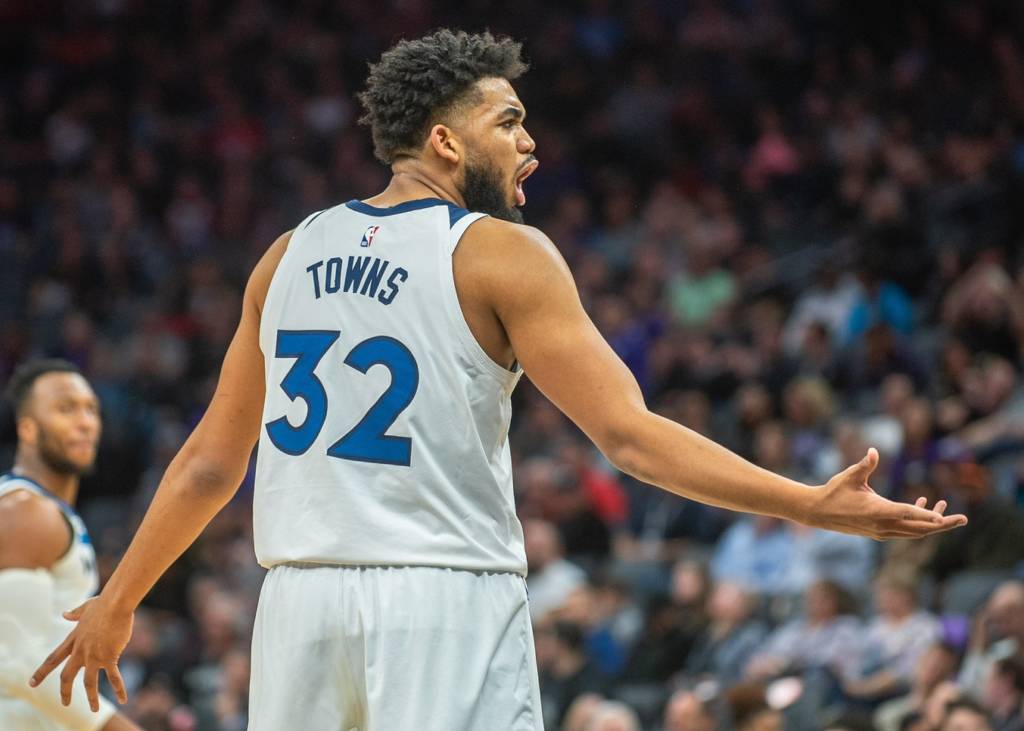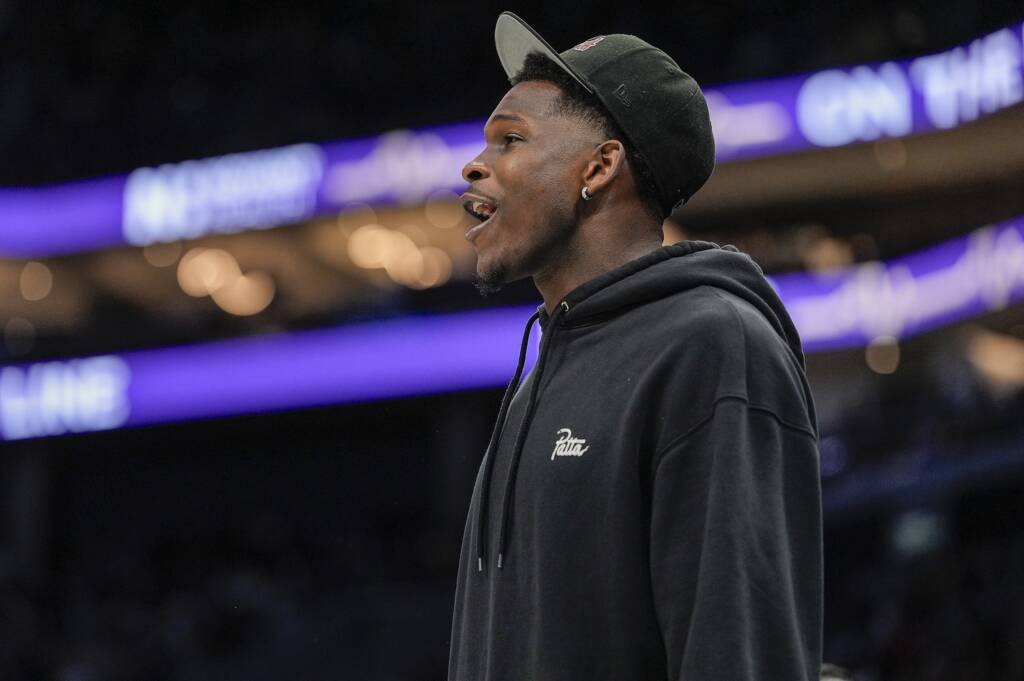In April of 2015 Sports Illustrated’s Phil Taylor weighed in on the biggest NBA Draft storyline at the time: Should Karl-Anthony Towns or Jahlil Okafor go No. 1 overall?
“Okafor might make a more immediate impact,” he wrote, “but winning teams have big men who can provide solid interior defense as well as score. Towns is more likely to fit that description.”
When Flip Saunders and the Minnesota Timberwolves ended up selecting Towns in that June’s draft, it felt like a paradigm shift had occurred at the Barclays Center’s main stage. Okafor had been the census top recruit in the 2014 graduating class for the entirety of his high school career, had parlayed that into 17 points and 9 rebounds a night on 66% from the field, a mark that would be considered high for a 2K MyPlayer career. Not to mention, while Towns and his Kentucky Wildcats fell short in March, Okafor had won the NCAA championship.
The value of the big man in basketball was changing, however, and people were catching on. Even if KAT only played 21 minutes a night, he did so as one of the two anchors of a historic Kentucky defense, one that allowed only 54 points a game to their opponents, despite playing at a pace not far off the Division I average. Kentucky held a 5th-ranked Kansas team to 40 points in an early season game. In the Sweet Sixteen, West Virginia managed only 39. After 30 minutes of play in a November game against Montana State, the Wildcats were winning 63-11. At that point, Towns had as many blocked shots as the Bobcats had made field goals (5).
Towns’ offense was considered a throw-in luxury on top of a futuristic big man’s defensive package. He blocked shots at the rim and jumpers when he was asked to switch out onto perimeter players. His long arms clogged the passing lanes, while his feet rarely stood still as he navigated around the paint, aggressively maneuvering circles around his matchups who struggled to post him up and were swallowed up by his long arms on dump-downs. Towns and Willie Cauley-Stein were considered to be the two linchpins in the defense that finished the decade ranked second in single-season efficiency by KenPom.
Now, five years later, and in the shadow of yet another first overall pick decision looming for Minnesota, it’s almost surreal to remember the type of defender that Towns was as a freshman in Lexington. The only season that the Wolves haven’t finished in the bottom 10 in defensive efficiency during KAT’s tenure has been the most recent one, in which Towns played only 35 games and the Wolves were 8 points per 100 possessions better defensively when Towns was sitting on the bench.
During these years, the excuses come quickly and consistently. “He’s still adjusting to the NBA game,” carried Towns for the first couple years. Then, as his scoring load expanded, the excuse surrounding Towns’ lackluster defense mutated along with it, with his apologists claiming that all the energy he used on offense had to come at the cost of lower effort in other areas.
Conveniently, that other area always occurs on the less glamorous side of the court.
Here’s the truth about Towns’ defense during his first half decade in the league: It has sucked. It’s been so constantly awful on a per-night basis that you could argue that Towns’ poor defense has been the most consistent thing about him as a pro.
Looking into the nuance of Towns’ defensive game, it’s hard to argue that there is a single worthwhile thing that he does well. His post-up defense is largely fine, but the caveat here is that against any team that actually emphasizes posting one of their players up, Towns is overmatched every single time. As far as his rim protection goes, inexplicably, it seems like the times that Karl is most engaged in protecting the rim occur when he’s guarding a stretch big. Then, in pick-and-roll, the foundation of the modern NBA’s offense, the only player targeted at the same per-game rate in the league is Rudy Gobert. Despite Gobert’s reputation as a bit of an inmobile stiff, it’s Towns and the Wolves who gave up more points on a per-possession basis in these pick-and-roll actions.
It might come off as a bit unfair to harp on Towns’ defense when his offensive game has bloomed in a way that nobody could’ve anticipated in 2015. Towns morphed from a player at Kentucky who had a sweet stroke — and many swore he was a fantastic shooter, but he only took 8 three-pointers and a few mid-range shots a game — to literally the best spacing center in the the NBA, shooting 41% on almost 8 three-pointers a game in 2019-20. The amount of big men who can average over 25 points a night in the NBA is miniscule, and none of them provide the spacing relief of Towns. And, with his $190 million extension after his fourth year, KAT was certainly well-paid on the scarcity of the high-volume, offensively-diverse, big man spacing market.
Frankly, the guy that Tom Thibodeau and Scott Layden paid was nothing like the man that Saunders thought he was drafting.
Has anything changed, however, since SI’s Phil Taylor weighed in on the Towns or Okafor debate in 2015? Do teams still need good interior defense out of their centers to actually win the championship? The list of big-minutes centers on championship teams since then is full of players of varying offensive skill sets and impact, but defensively they all have one thing in common: They do, in fact, defend.
Draymond Green was the backbone of the Warriors dynasty as a small-ball center, while Andrew Bogut and JaVale McGee pitched in with token starts. JaVale and Dwight Howard submitted token starts for the Lakers this year, while Anthony Davis swallowed his desire to play power forward long enough to anchor the defense at center when it mattered.
While Kawhi Leonard stole the show as the one-year rental in Toronto championship run, a trade deadline move that flipped Jonas Valanciunas into former DPOY Marc Gasol might’ve quietly been of near-equal importance in bringing a title to the Great White North. Going back to 2016, the Cavaliers’ mid-season trade for the defensively-inclined Timofey Mozgov helped bring a championship to Cleveland, and changed forever the meaning of “getting Mozgov’d” from a baptism poster on a player’s head, to a fat wad of poorly-allocated money into the player’s bank account.
Throughout NBA history, one of the few archetypal constants is that for a team to win the championship, their center needs to be a positive on the defensive end. To go back to the last team that won it all without a solid defensive center, the most recent example that could even be argued would be the 2005-06, with 34-year old Shaquille O’Neal. Even then, O’Neal’s defensive effort was certainly better in the 2006 Finals compared to his 2004 Finals showing, in which his heavily-favored Lakers lost to four-time DPOY Ben Wallace and the Detroit Pistons.
This leads us to a very tangible fork in the road, especially with such an unexpected gift of this year’s first overall pick complicating matters:
Given that Towns’ level of defensive engagement has been low during his first five years in the NBA, and especially now that he’s already financially set for life with his second contract, why aren’t the Wolves seriously tending offers on KAT considering the potential fatal implications of Towns’ defensive outlook?
What would the Wolves have to accomplish to make this team a contender around Towns’ current level of defense? Is it even possible? And, if it’s possible, is it feasible from a talent acquisition and cap sheet standpoint?
The second question appears to be the one with a more immediate answer: It’s of dubious possibility, and even less feasibility. Even when KAT was paired with the stellar Robert Covington, competent opposing offenses consistently found a way to attack Towns in pick-and-roll in crucial late-game possessions, often after RoCo was forced into a less impactful defensive matchup. To construct the basketball Dyson sphere of four capable perimeter defenders around Towns at all times would be about as expensive as its real life counterpart, and with no guarantees of success.
So, returning to the first question, how can the Wolves not be entertaining offers on Towns when league-wide interest remains high? Sure, the FOMO of dealing a former first overall pick of Towns’ offensive abilities would be high, but the reality of the league is that players like Towns rarely win it all, and his remaining four years of his contract runs a very tangible risk of exploding in the Timberwolves’ face if the market suddenly dries up on a sixth- or seventh-year player who needs to be paid like a franchise cornerstone, without the requisite guarantee of annual playoff appearances. To add D’Angelo Russell, with his baggage of poor defense at the price tag of $30 million a year, to this situation was short-sighted to say the least.
In 2013, new Philadelphia 76ers general manager Sam Hinkie shocked the basketball world when, despite having the 11th pick, he flipped his 23 year old All-Star Jrue Holiday into the 6th overall pick and a future first. This won’t divulge into another The Process thinkpiece, but it’s worth noting that the Wolves would get substantially more for Towns if they chose to go this route on draft night. Two immediate lottery picks, or an immediate high lottery pick and two future first rounders could easily be on the radar if KAT suddenly became available for the right price.
It would be a radical move, but is it more radical than hoping and praying that, in his sixth season, an unmotivated defender suddenly recaptures his desire to defend like he did in college, after already being paid more than $200 million to be the apathetic defender that he’s been? Or hoping that a decades long trend breaks here, in Minnesota, within the next four years?

